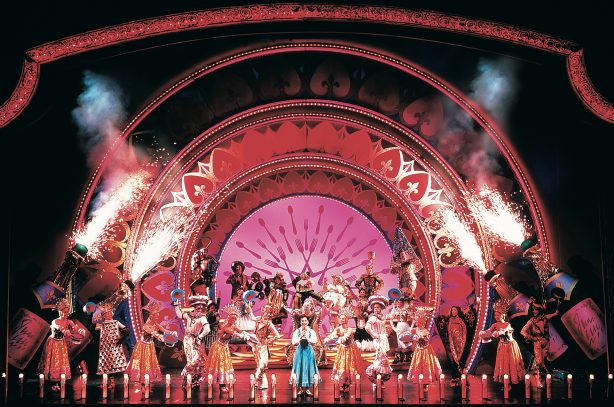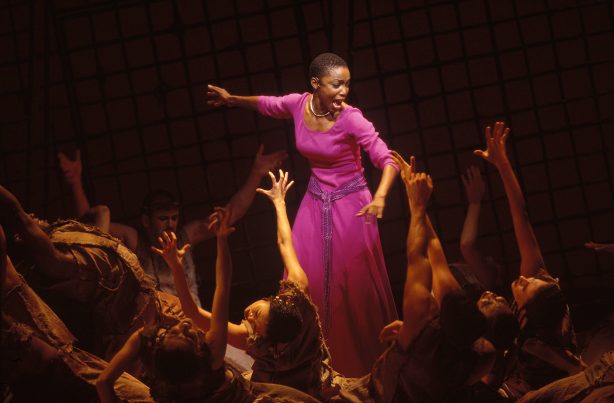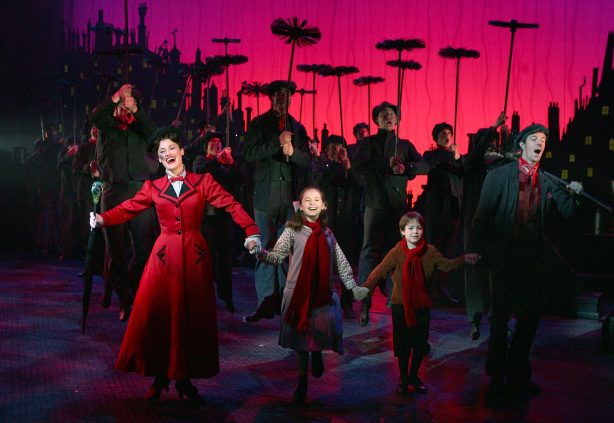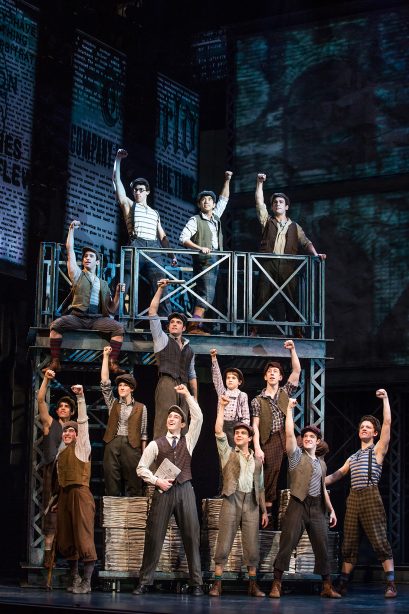Disney Theatrical Group’s origin story begins with a tale as old as time.
Disney’s Beauty and the Beast opened at the Palace Theatre in New York in 1994, setting the stage for future productions such as The Lion King, Aladdin, and Frozen. Today, Disney Theatrical Group is among the most successful commercial theater producers in the world, bringing its 10 Broadway titles have been seen by nearly 230 million theatergoers in 38 countries.
Although Walt Disney Animation Studios’ Beauty and the Beast (1991) was a triumph—it was the first animated feature film to be nominated for Best Picture at the Academy Awards®—its success on the Broadway stage was anything but assured.

“It was really the Parks folks, Bob McTyre and [Disney Legend] Ron Logan, along with Michael Eisner [then-CEO of The Walt Disney Company], who brought Beauty to Broadway,” recalls Thomas Schumacher, Chief Creative Officer, Disney Theatrical Group. “They used some of the legal staff from Walt Disney Studios and brought in an outside management company. There wasn’t a Disney Theatrical Group then. There was no plan.”
Schumacher—along with a group including director Rob Roth, choreographer Matt West, costume designer Ann Hould-Ward, lighting designer Natasha Katz, and book writer Linda Wolverton—were tapped to adapt the film for the Broadway stage. The first project for Walt Disney Theatrical Productions (as it was then known), Beauty and the Beast opened on April 18, 1994, later winning a Tony Award® and ultimately running for 5,461 performances.
Mere months after Beauty and the Beast launched on Broadway, Disney’s The Lion King premiered in movie theaters. “Myself, [then-President of Walt Disney Animation Studios] Peter Schneider, Michael Eisner, and [Disney Legend] Elton John were sitting together the day after the film premiered, and the question for Elton was: ‘What do you want to do next?'” Schumacher says. “Elton said, ‘I don’t think I want to do another movie right away, but didn’t you just open Beauty and the Beast onstage? I’d like to do something like that.’ We were developing Aida based on a book written by the great opera star Leontyne Price. I said, ‘It’s not really right for an animated movie. What about Aida a stage show?’ Everyone went, ‘Let’s to do that!’ We began to develop Aida on that day in June 1994, the very morning after The Lion King film premiered. Thus was actually born the enterprise of Disney Theatrical, using the impetus of our one-off productions of Beauty.”

Time to Shine
As John and Disney Legend Time Rice were working on Aida, a stage adaptation of The Lion King was commissioned. Featuring songs such as “Circle of Life” and “Can You Feel the Love Tonight,” the show premiered at the New Amsterdam Theater on November 13, 1997. It then moved to the Minskoff Theatre on June 13, 2006, where it continues to entertain Broadway audiences eight times a week.
In fact, The Lion King—originally directed by Disney Legend and Tony Award winner Julie Taymor—is the most successful Broadway show in history, winning six Tony Awards, including Best Musical.
“We were rolling out Beauty and the Beast around the world, and Aida took a backseat to The Lion King,” Schumacher says. “After those shows opened, we were off to the races. Beauty was in many ways the catalyst, because it inspired the whole idea to expand our scope.”

In the years that followed, Disney Theatrical Group would open several other shows on Broadway, including Tarzan, Mary Poppins, The Little Mermaid, Newsies, and Frozen—many of which spawned international and touring productions. Among the more successful productions was Aladdin, adapted from the 1992 animated feature film. Now in its 10th year on Broadway, Aladdin is playing at the New Amsterdam Theatre on 42nd Street. Internationally, the musical is currently on tour in the UK and is playing at the Coliseum Theatre in Madrid and the Dentsu Shiki Theatre in Tokyo.
Going Global
Within the past three decades, Disney Theatrical Group and its local partners have staged dozens of productions across six continents (excluding Antarctica). Today, 20 Disney musicals are playing in eight countries worldwide, each performed in their local languages.
“It’s a very complicated process. We’re not just translating the language; we’re making cultural adjustments,” Schumacher says. “For example, the Genie in Aladdin doesn’t resonate in the same way that Michael James Scott and James Monroe Iglehart before him performed the character. They’re channeling this Cab Calloway, Harlem Renaissance jazz, Fats Waller vibe, which was actually what [Disney Legends] Howard Ashman and Alan Menken wrote for the film. Well, that doesn’t mean anything in Japan. There, the actor plays it with a vernacular that is similar to a game show host, since that resonates in Japan.”

No matter where a show is staged, it resonates in a way that is both current and timeless. “To so many people, inside and outside of the company, Disney is the story of people’s lives—the stories they grew up with,” Schumacher says. “In theater, we play it over and over. The audience often comes back and sees it differently, because of who they are now.”
That experience reminds Schumacher of his own 30-year journey with Disney Theatrical Group. “I started working on The Lion King in November 1990, and I meet so many people who have grown up with The Lion King. They were young Simba, and they were grown-up Simba, and now they’re Mufasa. They have gone through loss in their families, and they’ve gone through tragedy. When villainy has entered their lives, they’ve defeated it,” he explains. “The Lion King is such a metaphor because it’s a simple myth that it applies to everyone. It’s about family. It’s about community. It’s about loyalty. It’s about making mistakes and trying to set them right and do the right thing. These are values we all share.”